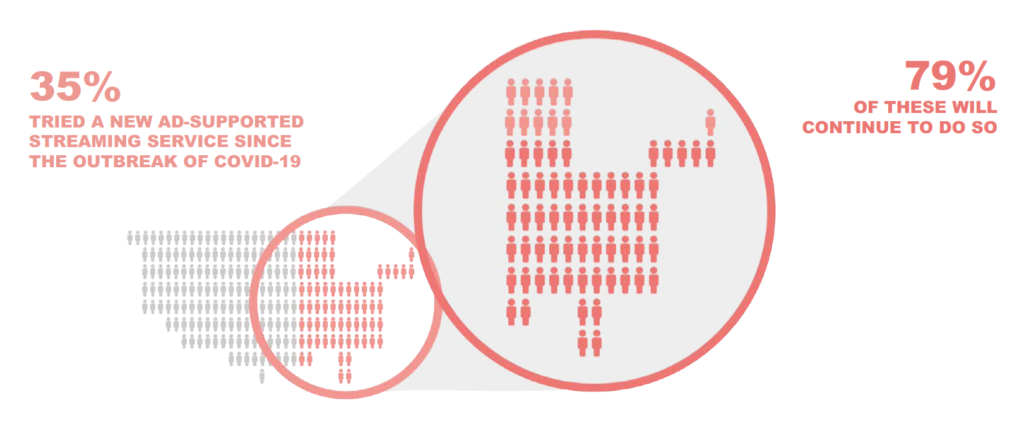CTV Finally Makes TV Advertising Accessible To All
Many brands (especially ones with smaller ad budgets) do not even consider TV advertising when planning their marketing strategies. That’s because traditionally TV spots = $$$$$$!
But that has all changed now thanks to the rise of connected TV (CTV).
CTV viewing — in other words, watching TV using devices connected to the internet — is on the rise across the globe, with many markets seeing accelerated growth due to global lockdown restrictions, brought about by the spread of COVID-19.
Recent research we carried out found that 82% of the UK and 80% of the US population now have access to CTV content.
Streaming into the future
According to EMarketer’s Q2 2020 Video Trends report, for the first time, more than half of US consumers’ digital video time will be spent watching over-the-top (OTT) subscription services this year.
We also found that more than a third (35%) of US consumers have tried a new ad-supported streaming service since the outbreak of the COVID-19 pandemic. Of those, 79% say they will continue to do so.

Netflix also announced last month that the number of APAC subscribers has increased dramatically, from 12.94 million to 22.49 million from April to June.
Although streaming is how many of us access our favorite shows, it has taken a while for advertisers to realise the benefits of advertising via this format. However, this is now changing, with CTV spend projected to hit $40 billion by 2020, which is nearly half of the $85 billion in forecasted total TV ad revenue.
So how can brands with smaller budgets enter the TV space?
CTV offers smaller, more targeted campaigns on the big screen for less than their linear TV counterparts, which is priced highly due to large reach numbers.
This is done through a technology known as addressable TV advertising, which shows different ads to different households while they are watching the same programme at the same time, accessed through either a cable, satellite or TV streaming service.
For example, two households from different sides of the country could be watching the same Game of Thrones episode at the same time on the same TV but receive different ads during the breaks depending on the profile of their household. This profile includes factors like household income, number of children, location, and what sorts of content they enjoy watching.
Writing about addressable TV in the IAB UK’s guide to CTV, Richard Brant, AV Product Director, Amplif said: “This technology means TV becomes accessible to all, even those with small geographical-led local budgets. TV access, yet not losing the ability to apply granular targeting to make every penny count, makes it truly competitive to a traditionally digital domain.”
Multiple formats
Unlike linear TV advertising, CTV offers a variety of ad formats for advertisers to choose from depending on their budget.
Creating TV ads in the past was a lengthy process, with big production costs meaning many advertisers steered away from the medium due to time constraints and fears around costs spiralling out of control.
Les Seifer, who heads up the creative team at our sister company Tremor Video, works with advertisers from all ends of the spectrum, from large global entities seeking to push new products to young scale-ups wanting to get their brand in front of potential customers.

“There is a wealth of creative opportunities on CTV for advertisers to play with — from simple custom overlays, end cards or branded title cards, to the much more polished edits that feel on brand and seamless with the original video advert.
“Interestingly, some of the more effective and creative CTV advertising we’ve done has come from younger, smaller brands that are open to looking at what CTV can offer them and recognise the way people ingest content.”
To find out more about how the CTV landscape has evolved during COVID-19, download our latest study. We surveyed 2,562 UK and US consumers in July 2020 to identify consumers’ attitudes to CTV, consumption habits and ad preferences five months after the global outbreak of the Coronavirus.
